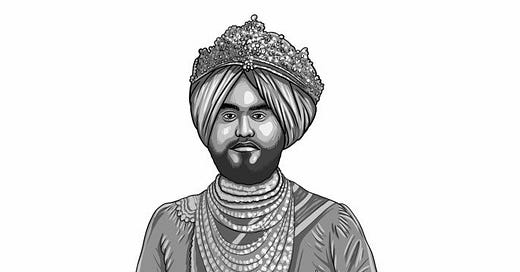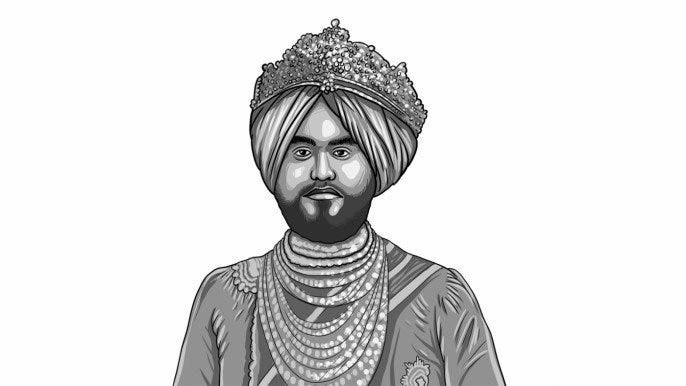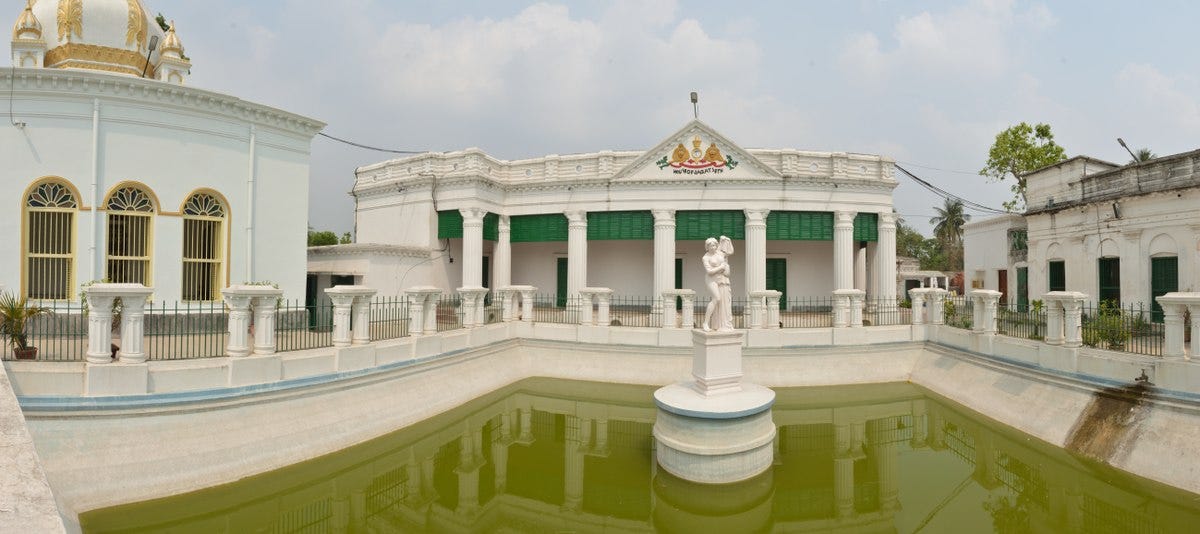Jagat Seth: The Richest Bankers In The 17th Century - #Issue: 11 🗞️
Known as the 'Bankers of the world', this Indian Marwari family was the richest in the world. They lent money to British, France and Mughals.
Hey there 👋
It is that time of the week when you want to sit down, grab a cup of chai or coffee and read about the Indian Marwari family, once known as the ‘banker of the world.’
Before we dive deep, Would you mind sharing this story with your friends and family?
Marwaris, one of the prominent business communities in India is known for their business acumen and vast wealth. For centuries, the Marwari business families have played a crucial role in the development of the Indian Economy. Marwaris are known for passing their wealth and fortunes from generation to generation. Even today the list of richest Indians is dominated by the Marwari business houses. A few centuries ago, a Marwari family was considered to be “the richest” not just in India, but all over the world.
The Beginning:
The story goes back to 1650 when a certain jeweller by the name of Hiranand Sahu left his hometown of Nagaur, Rajasthan. He moved to the Bengal and settled in Murshidabad.
In Murshidabad, he started a money lending business. Over the next few years, his business prospered. With growing business came the name and vast wealth to the Sahu family. Soon, Hiranand Sahu started lending money to nobles and aristocrats of Bengal.
In a strategic move, Hiranand Sahu sent his sons to other prominent cities of Bengal like Dhaka and Kolkata. His sons started branches of their money lending business in those cities.
After the death of Hirannand Sahu, his eldest son Manik Chand became the head of the family and the growing money lending business empire.
The Nagar Seths:
With the growing stature of the family, Manik Chand became very close to the Governor (Diwan) of Bengal, Murshid Kuli Khan. Manik Chand became his financial advisor. In the next few years, Manik Chand was made the Treasurer and Controller of Revenues. Manik Chand was the most powerful and wealthiest merchant in Murshidabad.
After the death of Aurangzeb in 1707, the sunset on the Mughal Empire. Once the mightiest empire was on the ruins with mutiny inside the family and outside in the ranks. The Diwan of Bengal took benefit of the power vacuum and proclaimed himself the ruler of Bengal.
By 1712, Mughal Empire was in a financial crunch. The emperor Farukh Siyar turned to Murshid Kuli Khan for financial assistance. Manik Chand, the good friend of the diwan lent money to the Mughal Empire. As a gesture of gratefulness, Mughal Emperor granted the title of 'Nagar Seth' (Banker of the City) to Manik Chand. This marked the formal beginning of the financial empire of the Jagat Seths.
Jagath Seth:
Manik Chand died without a male heir in 1714. During his life, Manik Chand adopted his nephew Fateh Chand. Fateh Chand became the head of the family and their money lending business. Fateh Chand also inherited the title of "Nagar Seth".
Fateh Chand took the family business to new heights. During Fateh Chand's reign, the money lending business was expanded to major cities of the Indian subcontinent. They had major branches in Delhi and Lahore.
The Mughal Emperor in 1724 granted Fateh Chand the title of Jagat Seth (Banker of the world).
At one time, the Jagat Seths controlled the mint (money printing business) of Bengal. The family virtually controlled the supply of money in the Bengal and Indian subcontinent. The family was also the personal banker of the Mughal Emperor and Diwan of Bengal.
During the same time, Jagat Seths were also lending money and financing the trades of the British, French and Dutch kingdoms.
The bankers:
At the peak of their time, Jagat Seths were given the task of collecting revenue from the other parts of India and transporting the money to Delhi. Before Jagat Seths, the money was transported through elephants from various parts of India. This process was lengthy and risky.
The branch in Murshidabad and other cities used to receive the whole amount collected in taxes. They will deposit the amount in their treasury. Then a letter was written with the instruction and sent to Delhi. And when the letter reached Delhi, the branch of Jagat Seth release the equal amount of money that was deposited in Murshidabad and other branches. This was probably the first example of modern-day core banking.
The richest man in the world:
The latter half of the 18th century saw the colonial power of Europe expanding into Asia. The British, the French and the Dutch were involved in the trading of spices, silk and minerals from India. These colonial powers often reached out to Jagat Seth for loans. Jagat Seth used to finance their trades. The family lent few lakh rupees in the 1700s to these colonial powers. The money would easily be equal to a few billion dollars in today's value.
Robert Omre, the British historian who worked the East India company noted that Jagat Seth was the richest man in the world in the 18th century. He further noted, the British Economy during that time was much smaller than the personal wealth of Jagath Seth.
A bet went wrong:
Jagat Seths sided with Siraj Ud Daulah during the Battle of Plassey. Though the family lent money to both sides, the East India Company and Siraj Ud Daulah. Siraj Ud Daulah lost the battle and this marked the begging of the rule of East India Company in Bengal. As the British East India company became more powerful in Bengal, the control of Jagat Seths in the money market started to fall.
The later heads of families were known for extravagant lifestyles. Their expense keeps on increasing even after a major fall in their business. By the early 1900s, the Jagat Seth family became insignificant.
Like this issue of Stories Indica? How about you drop a like below and share your thoughts in the comments?
A small note:
We at Index Daily always have our ears open for suggestions. If you have something to tell us or want to give feedback, drop us a mail at hello@indexdaily.in. We are always up to learn and reinvent ourselves.
If you like this story, Why don’t you share this with your friends and family?
Till we meet again with another story.
Cheers,
Team Index Daily
Coming next:
The iconic story behind an iconic Indian alcohol.
Recap:
If you have missed the last issue of Stories Indica, read it here:









2Ms run India. Marwadis and their money
Everytime I read your newsletter, I learn something new.